There’s no doubt that vines are a truly exciting and versatile plant category. And in the context of terrariums, the fun only grows.
This article will touch on the creative ways to use vines in a build and give you a rundown of the most stunning must-haves.
Whether you’re looking for a monstrous tree-climbing bad boy, a fancy centerpiece, or a baby cutting to complete a finished project, there’s a terrarium vine for you.
Let’s do it for the vine!

Terrarium Tribe is reader-supported. When you purchase through links on our site, we may earn an affiliate commission (at no further cost to you). 💜
- Creeping & Climbing Terrarium Plants – Using Vines in a Build
- Best Terrarium & Vivarium Vines: The Ultimate Curated List
- 1 | Ficus pumila (Creeping Fig)
- 2 | Dischidia nummularia (String of Nickles)
- 3 | Syngonium podophyllum Neon Robusta
- 4 | Philodendron micans
- 5 | Peperomia
- 6 | Procris repens (Trailing Watermelon Begonia)
- 7 | Epipremnum aureum 'Manjula' (Manjula Pothos)
- 8 | Tradescantia Zebrina (Wandering Dude/Trailing Inchplant)
- 9 | Pilea
- 10 | Monstera siltepecana
- 11 | Marcgravia
- We've Reached the End of the Vine!
Creeping & Climbing Terrarium Plants – Using Vines in a Build
First, let’s get into the swing of things (yes, that’s a Tarzan joke) and look at how you can make the most of your vines in a terrarium or vivarium setup.
1. Creeping Terrarium Plants as Ground Cover
This is my favorite way to create a wild look in a terrarium and arguably the most straightforward method…
Some smaller vine cuttings will happily root themselves in the yummy humidity. Place them on top of moss or substrate, and over time, the vine goodness will creep around the container, creating an inviting ground cover.
Plants like Ficus pumila and Pilea glauca are ideal for this.
2. Hanging Vines in a Terrarium (Hardscape and Vivarium Backgrounds)
Many terrarium vines grow epiphytically in the wild, meaning they grow on other plants instead of terrestrially (think of a Pothos scrambling up a tree or a chunky Dischidia spilling from a nook).
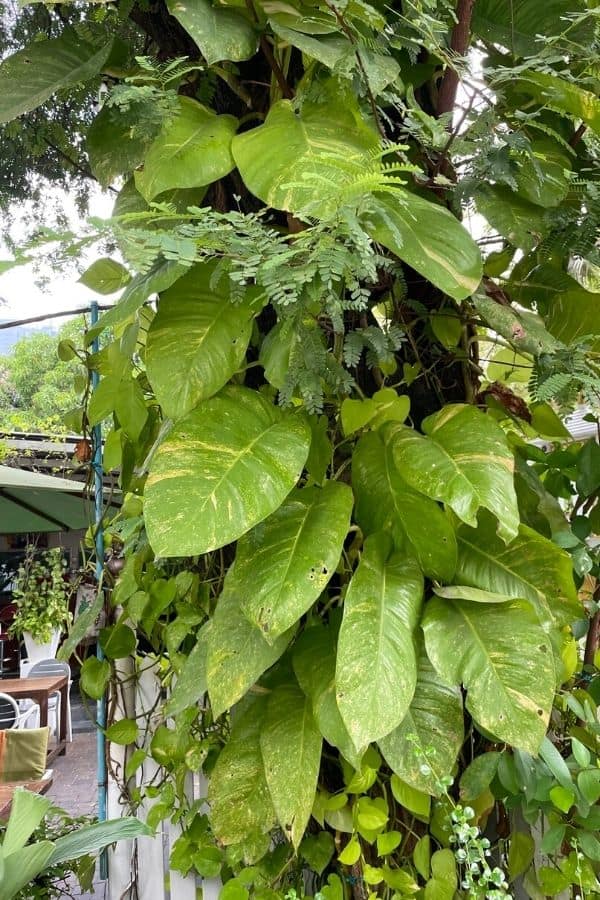
So, in a terrarium, we can take inspiration from mother nature and mount these plants up high on a purpose-made vivarium background or an interesting hardscape element, allowing them to trail down.
Alternatively, many vines can be planted near the base and encouraged to climb up.
3. Feature Plant
More compact vines that grow more vertically than horizontally – I’m looking at you, Syngonium – work well when used as a bright focal point.
Terrariums can often get a little bottom-heavy, and these kinds of vines are the solution. As they grow in, they’ll lift the focus and enrich the empty space.
Best Terrarium & Vivarium Vines: The Ultimate Curated List
Now your creative juices are pumping, let’s look at your choices.
1 | Ficus pumila (Creeping Fig)
How else could I start this round-up than with the iconic Ficus pumila?
There’s no better way to quickly pull off a grown-in organic aesthetic than by using this plant. This guy grows readily in a terrarium; it doesn’t take long for a tiny cutting to transform into an army of dainty ovate leaves.
We got a cutting from a friend, and before long, we had so much we could have set up a wholesale plant store.
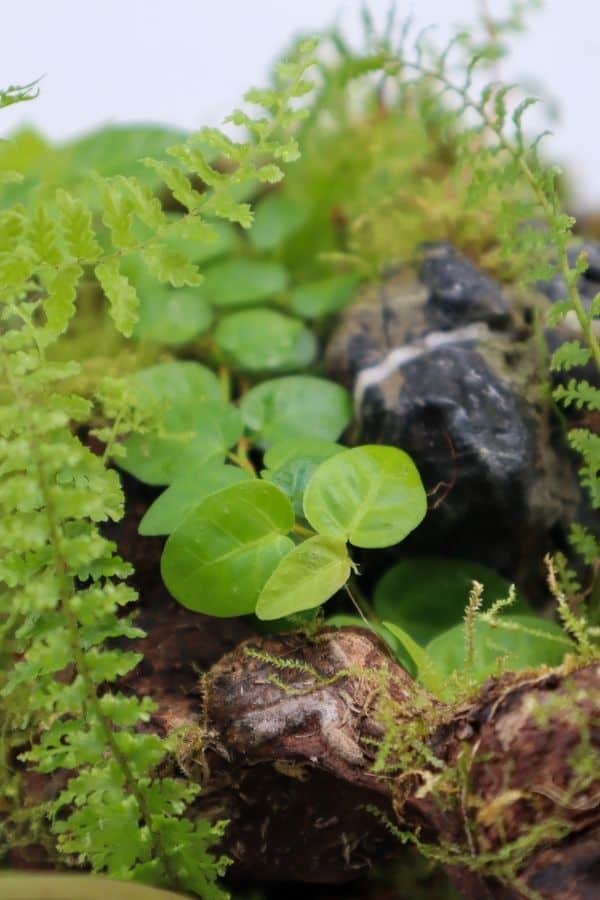
2 | Dischidia nummularia (String of Nickles)
Penny for your thoughts?
This gorgeous vine will give you all of the fun of cute succulent trailing plants (such as String of Pearls) but with that much-needed tropical climate suitability.
Being a natural epiphyte, it’s at its happiest when attached to a terrarium background, rock, or wood.
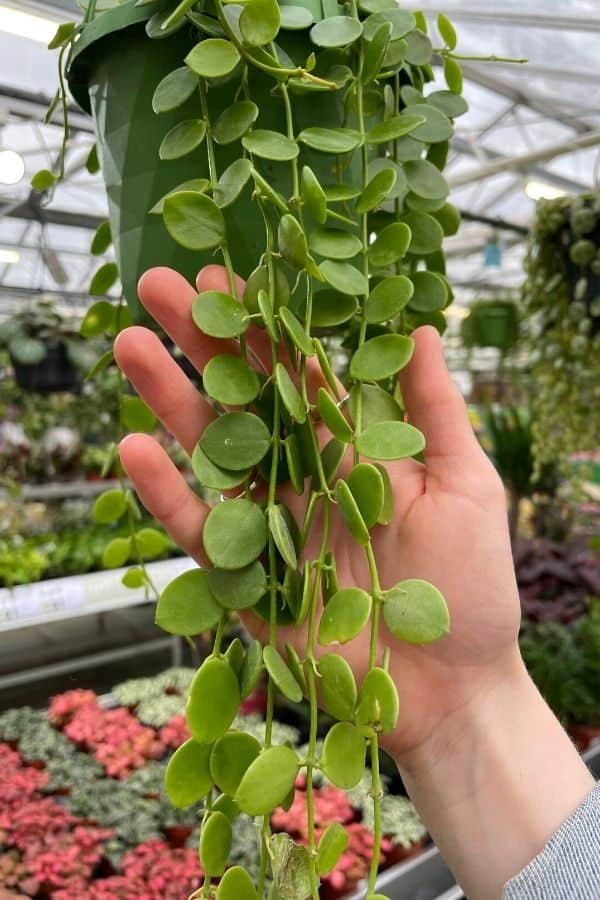
With beautiful flat, broad leaves and a reputation for being a slow grower, the String of Nickles is a no-brainer for your next project.
👉 Shop the String of Nickles on Etsy.
3 | Syngonium podophyllum Neon Robusta
It’s about time we have a splash of color on this list. Honestly, Syngonium are fantastic terrarium plants, period. But let me tell you why this little delight has made the cut today.
- It tends to stay relatively small – perfect for smaller projects.
- It’s a super compact grower, making it an excellent feature plant.
- It’s PINK.
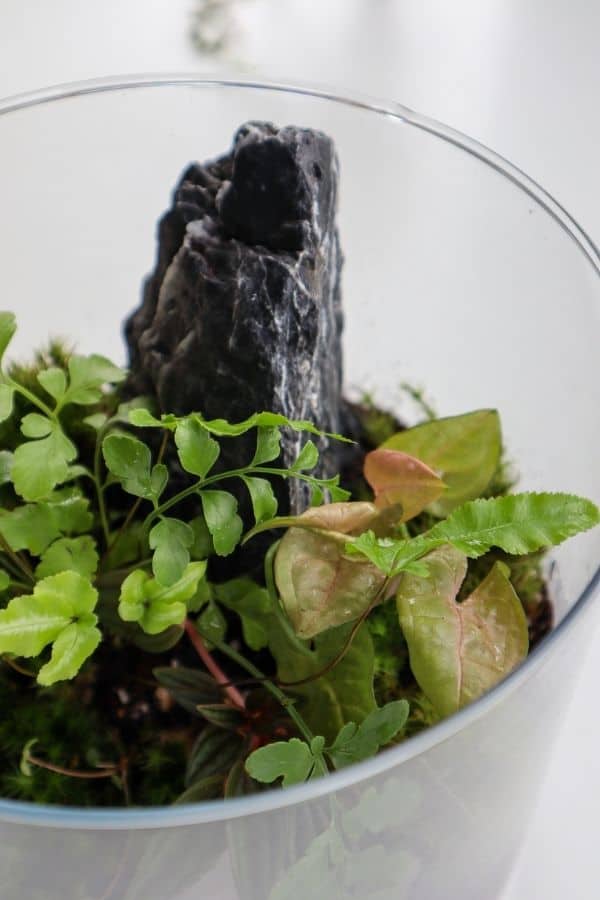
My other favorite that I simply couldn’t not mention had to be the Syngonium erythrophyllum ‘Llano-Carti Road’, which is an irresistible blood-red color.
👉 Shop the Pink Syngonium on Etsy.
4 | Philodendron micans
Don’t let plant size put you off; with fashionable rust tones and an irresistible velvety touch, Philodendron micans is a strong feature plant that will bring a luxurious feel to any terrarium.
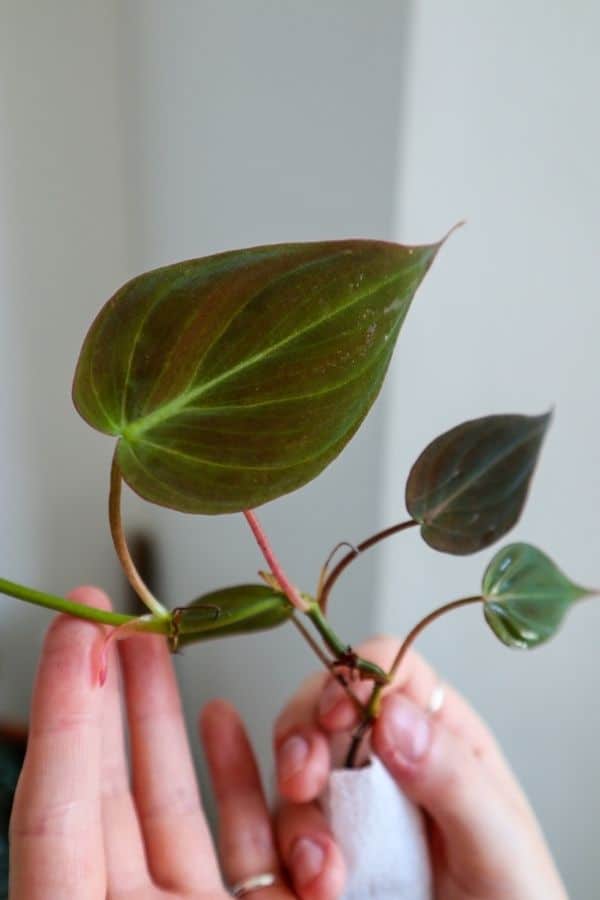
This plant really steals the show when it has space to flourish and trail in larger vivarium builds, but it’s not exclusively suited to bigger pieces. Even a simple cutting or two in a smaller project can look captivating.
👉 Shop Philodendron micans on Etsy.
It will need regular trimming, but having more cuttings is always a good thing, right?
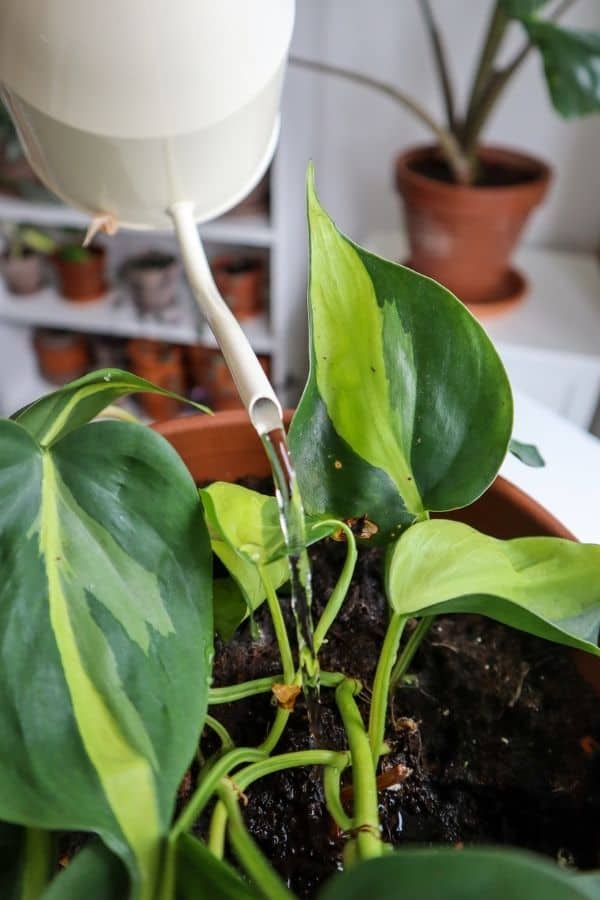
5 | Peperomia
If you’ve built a terrarium before, you likely know that Peperomia are a tropical terrarium’s best friend.
I spent a little too long trying to cut my vine curation down to just one, but in the end, it was like asking a mother to choose between her favorite children. So here are 3 top picks:
Peperomia prostrata (String of Turtles) – This plant and its distinct turtle shell variegation hardly need an introduction.
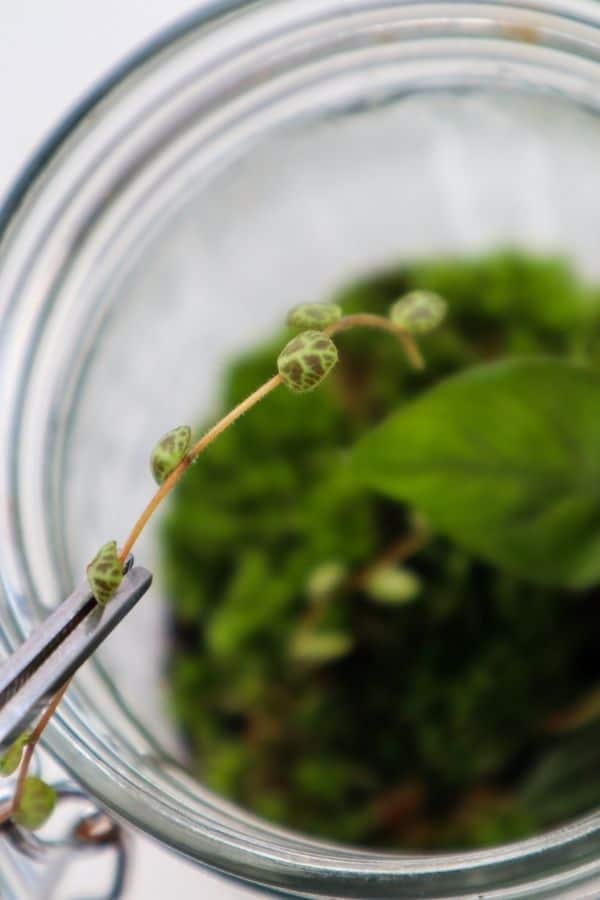
👉 Shop the String of Turtles on Etsy.
Peperomia pepperspot – A classic terrarium plant with ridiculously cute button-shaped green leaves and delicate reddish stems.
Peperomia obtusifolia variegata – Bold circular leaves and creamy variegation? Yes please! This vine prefers growing up instead of sideways, so if you’re short on ground space and want to draw the eye up, this plant is for you.
6 | Procris repens (Trailing Watermelon Begonia)
Named after its variegation, which looks similar to – you guessed it – watermelon markings, this plant is a fruity addition to any terrarium or vivarium project.
With tightly packed and long pointed leaves, it delivers contrast to a piece and looks fantastic both trailing and climbing.
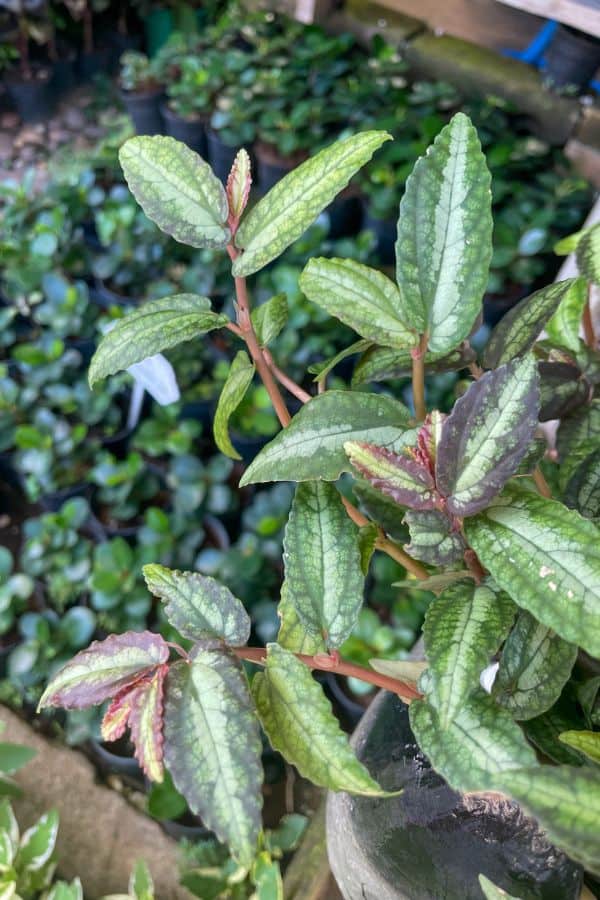
7 | Epipremnum aureum ‘Manjula’ (Manjula Pothos)
You might be thinking, ‘Christ, Rae, how colossal a container will I need to house an entire Epipremnum aureum?’. And that, of course, is a very valid point; most plant parents will have observed firsthand the ridiculous size and rapid growth these babies deliver.
However, the growth habit of the Manjula Pothos differs from its golden counterpart.
It boasts a significantly slower growth rate and has short leaf internodes (meaning the leaves grow much more compactly), making it much more terrarium-suited.
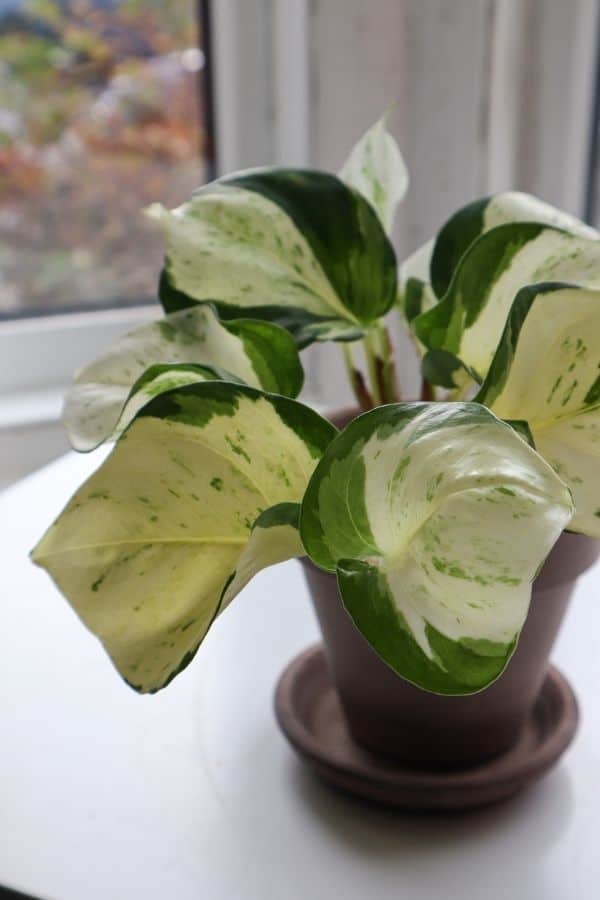
👉 Shop the Manjula Pothos on Etsy.
8 | Tradescantia Zebrina (Wandering Dude/Trailing Inchplant)
This photogenic vine is begging to be center stage in a snazzy terrarium environment. It flaunts all of the purples, army greens, silvers, and sharp angles your heart could desire.
Because it has such an aggressive growth pattern, it’s one for bigger projects and involved plant parents who don’t mind a bit of pruning, but the striking look is worth it.
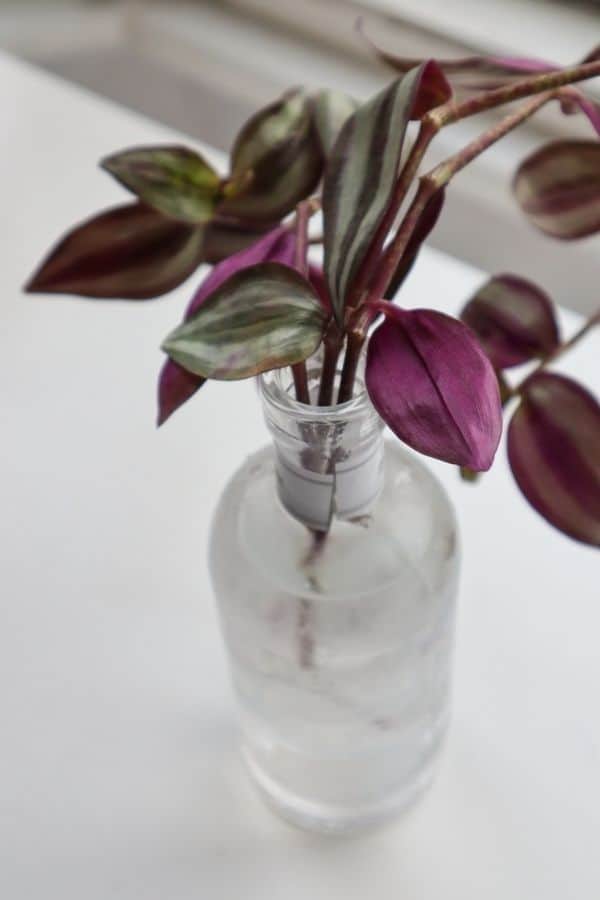
👉 Shop Tradescantia zebrina on Etsy.
9 | Pilea
By now, you must be sick of me saying that an entire genus is terrarium-ready, but that statement couldn’t be more accurate than for Pilea. So, I’m going to throw caution to the wind, break my own rules, and give you a few.
- Pilea glauca (Grey Artillery Plant) – The baby of the terrarium vine world. With silvery leaves no bigger than half the size of my pinky fingernail and striking pink stems.
- Pilea depressa (Baby Tears) – A perfect plant choice for those wanting to mimic wild bushy growth in miniature. You can’t find more extremely tiny and highly textured green leaves anywhere.
- Pilea mollis (Pilea Moon Valley) – A truly classic terrarium plant with deeply textured bright green leaves.
- Pilea involucrata (Friendship Plant) – Commonly confused with the mollis, the involucata is a statement feature plant, boasting textured leaves, grey/silver tones, and (if you’re lucky) adorable pink flowers.
Being bushy trailing plants as opposed to leggy vines, most Pilea (like the mollis and involucrata) work better as feature plants. In contrast, due to their teeny size, glauca and depressa plants make fantastic ground cover, and cuttings can be used to add texture around the container.
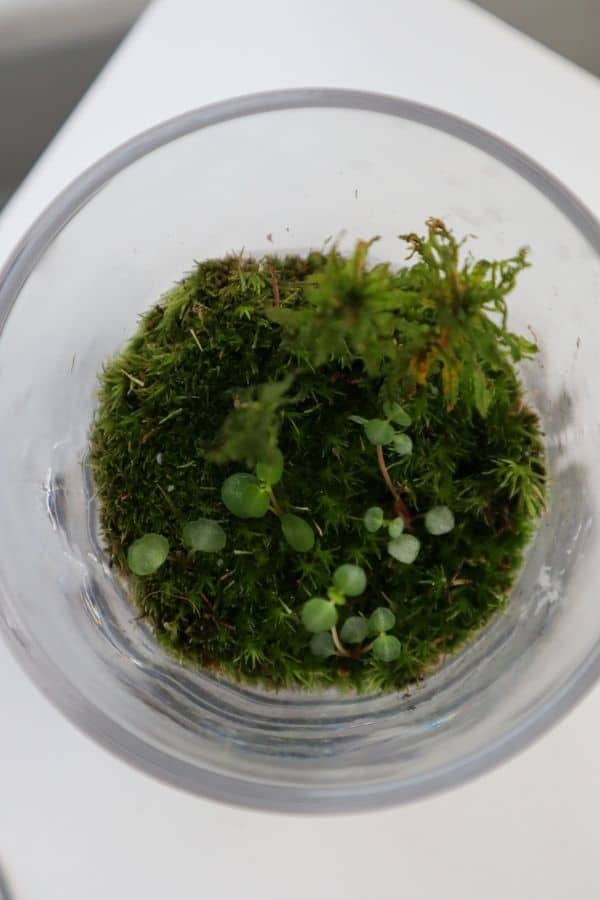
10 | Monstera siltepecana
It wouldn’t be a vine breakdown without a Monstera, so allow me to introduce you to one of my favorite plants: Monstera siltepecana – a sexy silvery delight taking the tropical plant scene by storm.
Monstera species love a humid environment, so they thrive in a terrarium setup. But as we know, the happier these plants are, the larger they tend to grow. While the siltepecana is more dainty than some of its cousins, mature plants can get fairly large, so regular trimming might be needed.
It’s a true natural climber, so to get the most out of it in a terrarium, I’d recommend planting it terrestrially and giving it something to climb up.
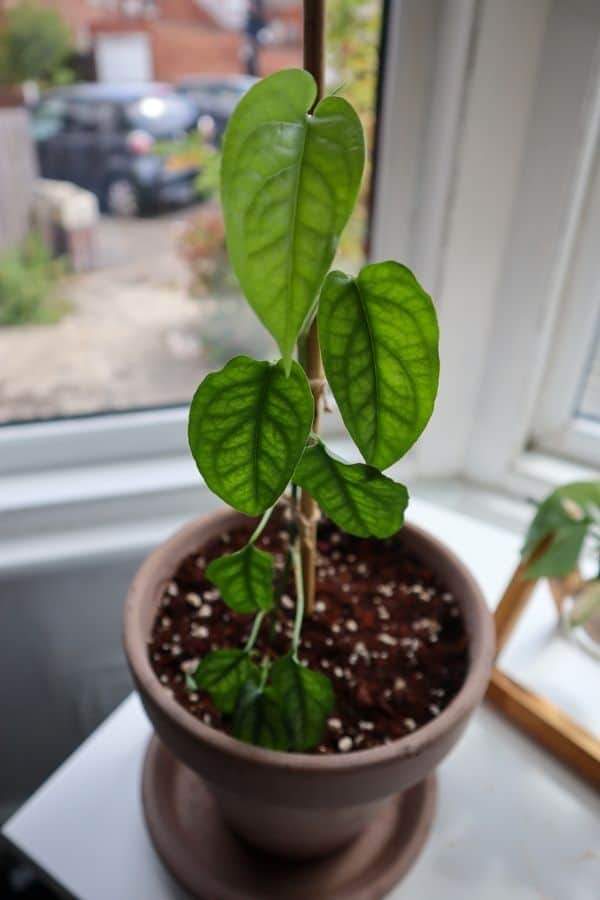
👉 Shop Monstera siltepecana on Etsy.
11 | Marcgravia
Margravia comes in all kinds of shades and markings, and they rightfully claim a place on this list.
The leaves of marcgravia sintenisii gradually turn from red to green as they grow, creating a sunset effect, and marcgravia umbellata has stunning detail that can only be compared to Lightening Jewel Orchids.
They edge into the more rare/expensive/niche side of terrarium plants, but they are a phenomenal choice.
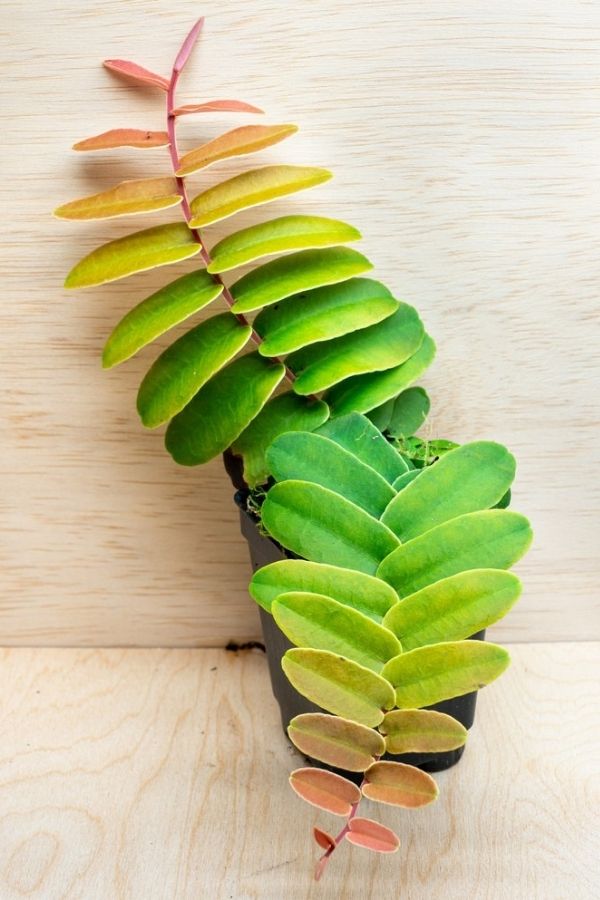
We’ve Reached the End of the Vine!
Here at Terrarium Tribe, we love vining species so much that we have a whole category in the Terrarium Plant Index dedicated solely to them. So if you haven’t found what you were looking for here, there’s a good chance you will there.
Or, check out our guide to beginner terrarium plants where vines feature heavily.
Let me know in the comments what your favorite terrarium vine is. Is it one on this list or a different plant entirely?
Let’s share the terrarium vine magic!
Or, if you’re ready to give those vines a new home, why not check out our Terrarium Tribe Shop?

So as a tip if you are living or visiting in New Orleans most of these terrariun vines listed can be found growing on the outer walls and fences of Mansions in the Garden District (especially marcgravia sintenisii) and on the ground in City Park or in the cracks of sidewalks and on the side of the road. Hope this helps!
Loving your site! I’m new to this and experimenting. How about sedums in terrariums? Thanks Mary 😀
Hi Mary! They’d be a really bad fit because they’re succulents – sticking to tropical plants is best 🙂